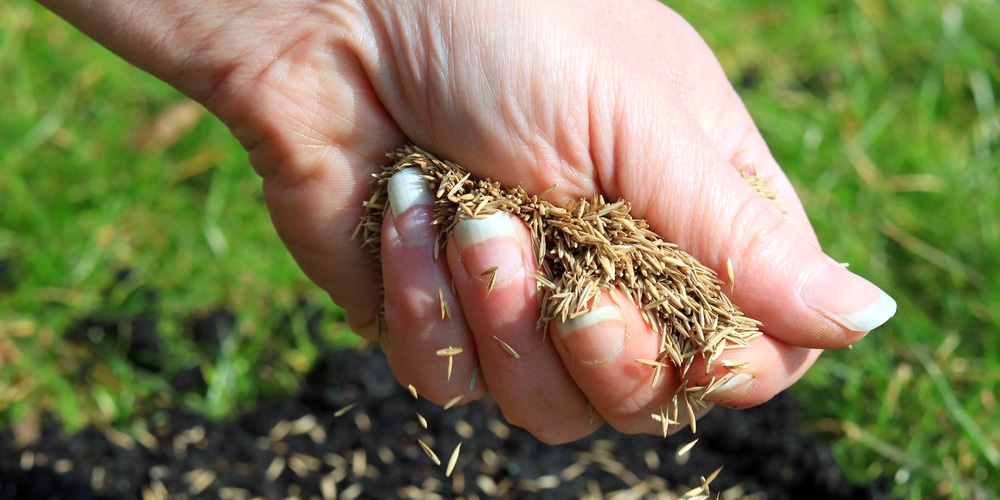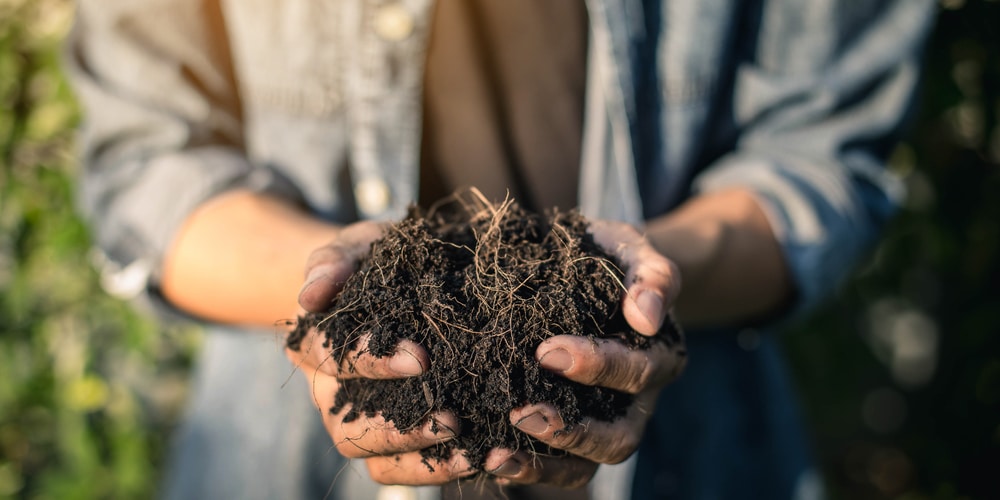Introducing a natural seed cover to protect newly sown grass from birds is a long-standing practice in agriculture. When you plant grass seed, straw is often recommended to help keep the ground warm and hold moisture for germination.
Adding a thin layer of straw over your grass seed will also protect it from birds that are looking for a quick snack. Let’s look at how to use straw cover for grass seed effectively.
Straw cover for grass seed

Before putting straw over your grass seeds, there are a few important points to consider. By taking these points into account, you’ll have higher germination rates and great success with using straw.
Choose the correct straw
Straw that is in perfect health and undamaged will help protect your seeds. It should be weed-free, mold and mildew-free, not treated with herbicide, and it shouldn’t be stained or dirty.
The size of the straw matters
Some types of straw are too small to be effective or are too large to lie flat on the ground. Choose straw rather than hay, as this will allow air pockets to be created that will protect your grass seed while still allowing it to germinate.
How much straw do I need?
For a yard that’s a 1000 square feet, you’ll require approximately one bale of straw. This will allow you to cover the ground with a thin layer of straw. Be careful not to overdo it when applying straw, as a thick layer will inhibit seed growth.
The Benefits of using straw to cover grass seeds
The benefits of straw to guard grass seeds are many. It holds in moisture while keeping out weeds; new grass seedlings germinate faster because the ground is warmer under the straw. The straw acts as a mulch to hold in water and increase humidity. It prevents wind damage, reduces erosion, and also protects new seedlings from birds. Using straw allows you to grow a lush green lawn rather than a thin and patchy one.
How to Apply Straw Cover for Grass Seed
Once you have decided on the best type of straw, it’s time to sow the seed and place the straw. Using a drop spreader or simply spread the straw in a thin layer by hand. Ensure your straw is spread evenly over the grass seeds and that you only use a thin layer of straw.
Before applying the straw, you may like to rake in your grass seed to cover the ground evenly. For larger areas, spread straw over the grass seed you have already planted.
Make sure that the straw is lying in an even layer with no gaps or ripples in it, covering your grass seed completely. Do not allow the straw to pile up on your new grass seed. If this happens, the grass seeds will be deprived of light, and you risk them dying before they have a chance to germinate.
Removing the straw
Provide a gentle water until your seeds have germinated and then regularly as needed. After your seeds have been growing for 8 to 12 weeks, you can remove the straw cover with a rake or by hand.
Alternatives to straw
There are a few alternatives that you can use to cover your grass seeds instead of straw. If the straw isn’t readily available in your local area, you may like to consider one of the following alternatives:
Aged pine straw
When using pine straw, only use the aged variety as new pine straw will affect how well your grass seeds grow.
Sawdust mulch
Sawdust is very fine and beneficial to grass seeds. Spread the sawdust over newly planted seeds at approximately a quarter of an inch thickness.
Peat moss mulch
Peat moss is a great organic option that you can use to cover grass seed. Ensure that you loosen the peat moss by hand before spreading it over your grass seeds. If it’s too compacted, the grass seeds won’t be able to grow.
Compost
You can try adding a quarter-inch layer of regular or mushroom compost over your newly planted grass seeds.
Conclusion
Using straw as a natural seed cover to protect new grass from birds and other animals is an excellent idea. Straw can keep out weeds, retain moisture and keep the ground warm without the use of chemicals or artificial means.
Related article: How to Keep Birds From Eating Your Grass Seed

